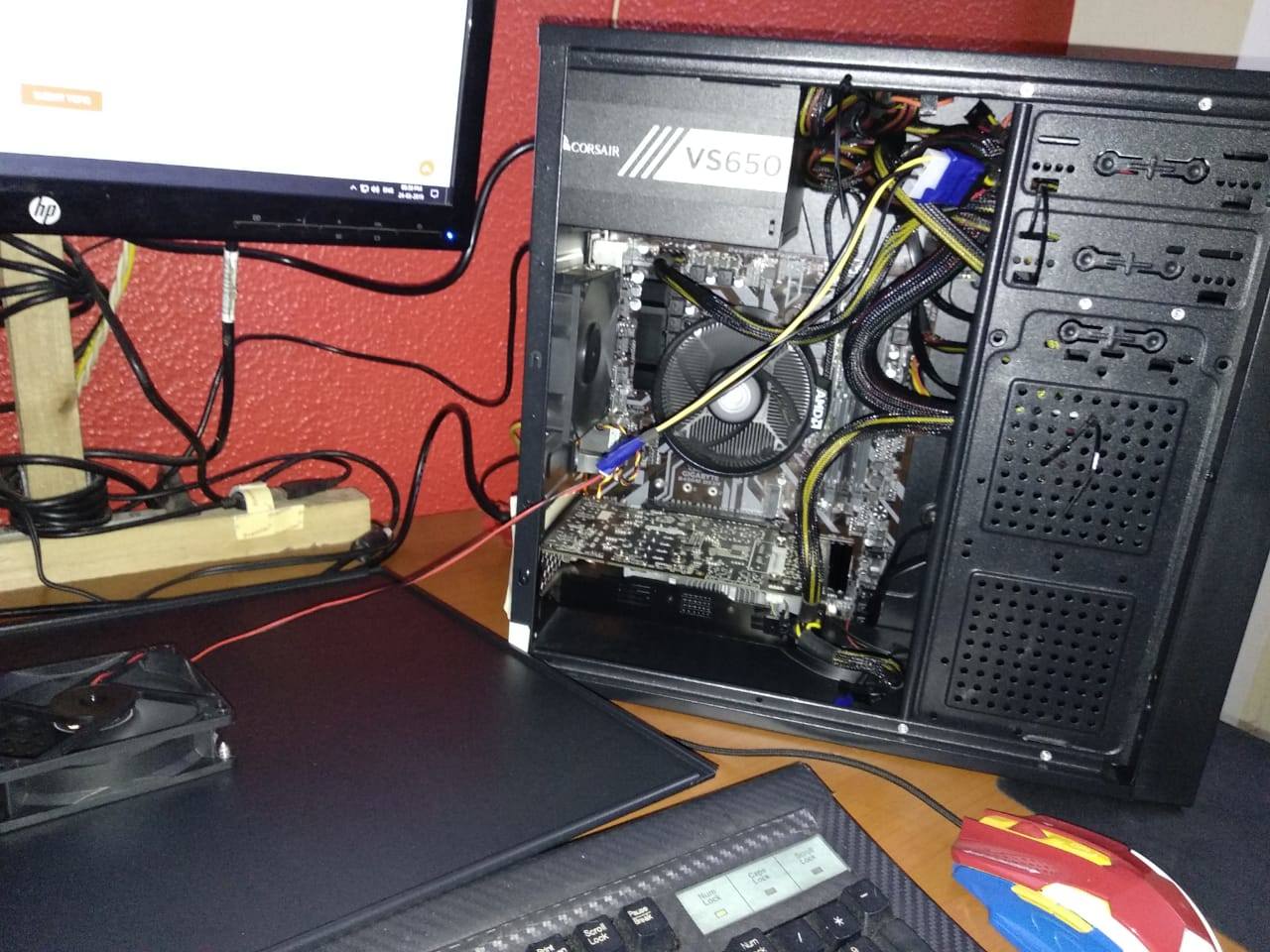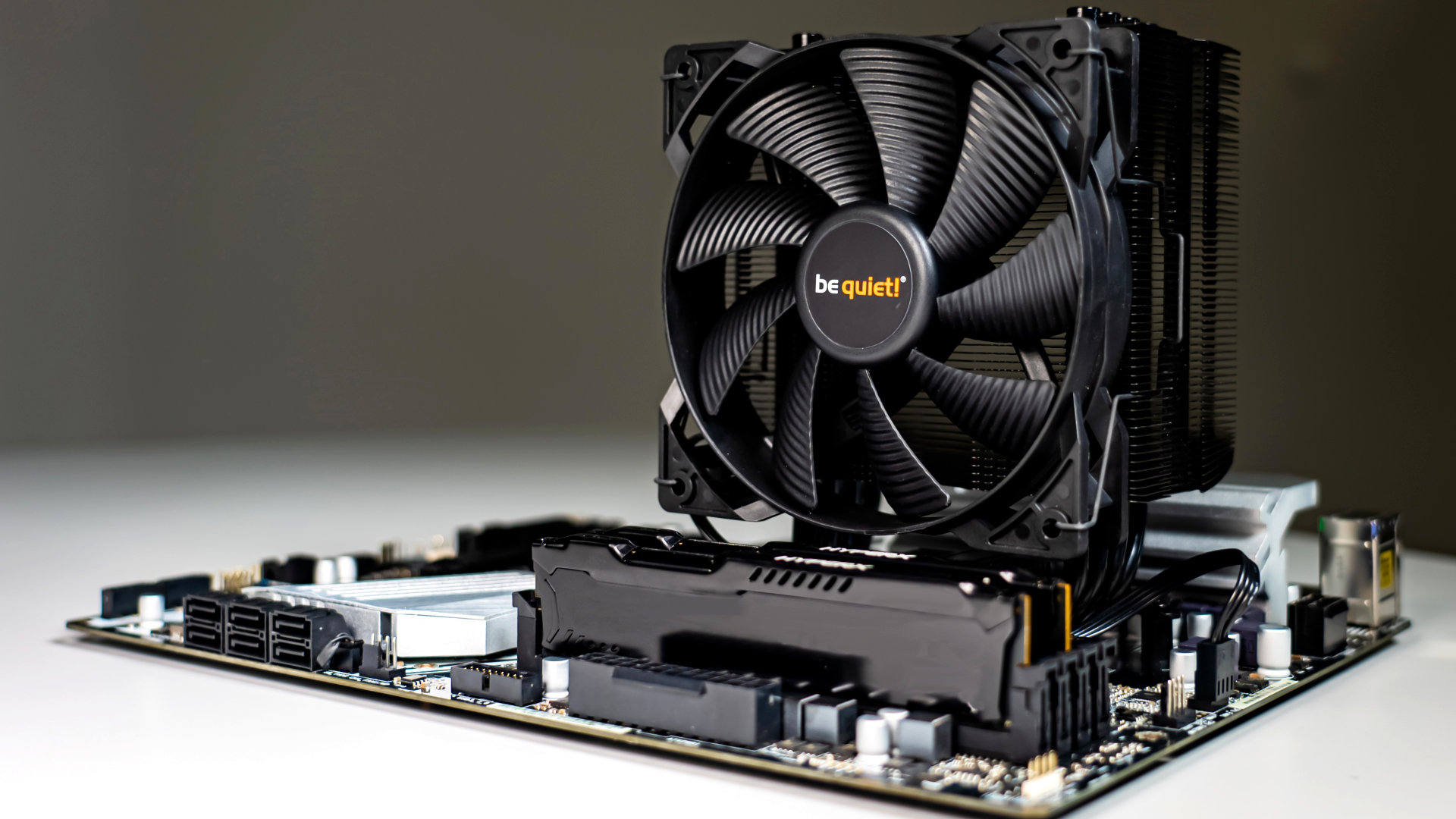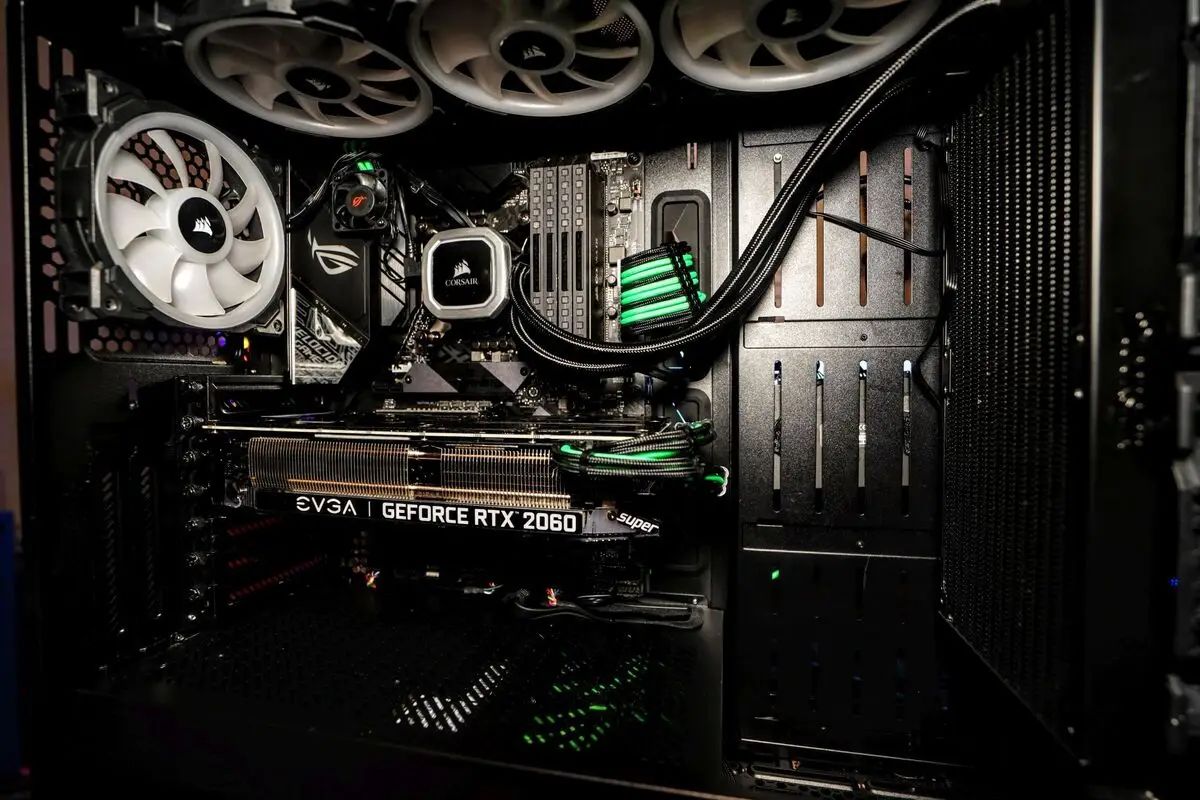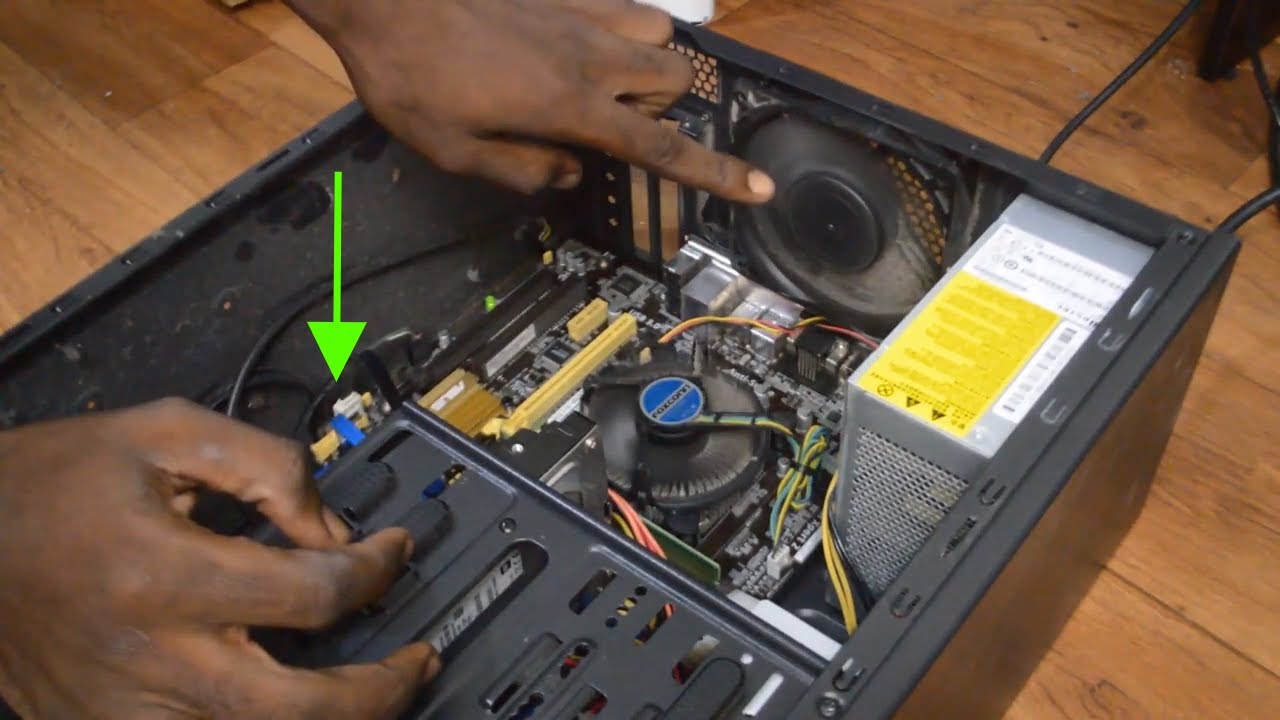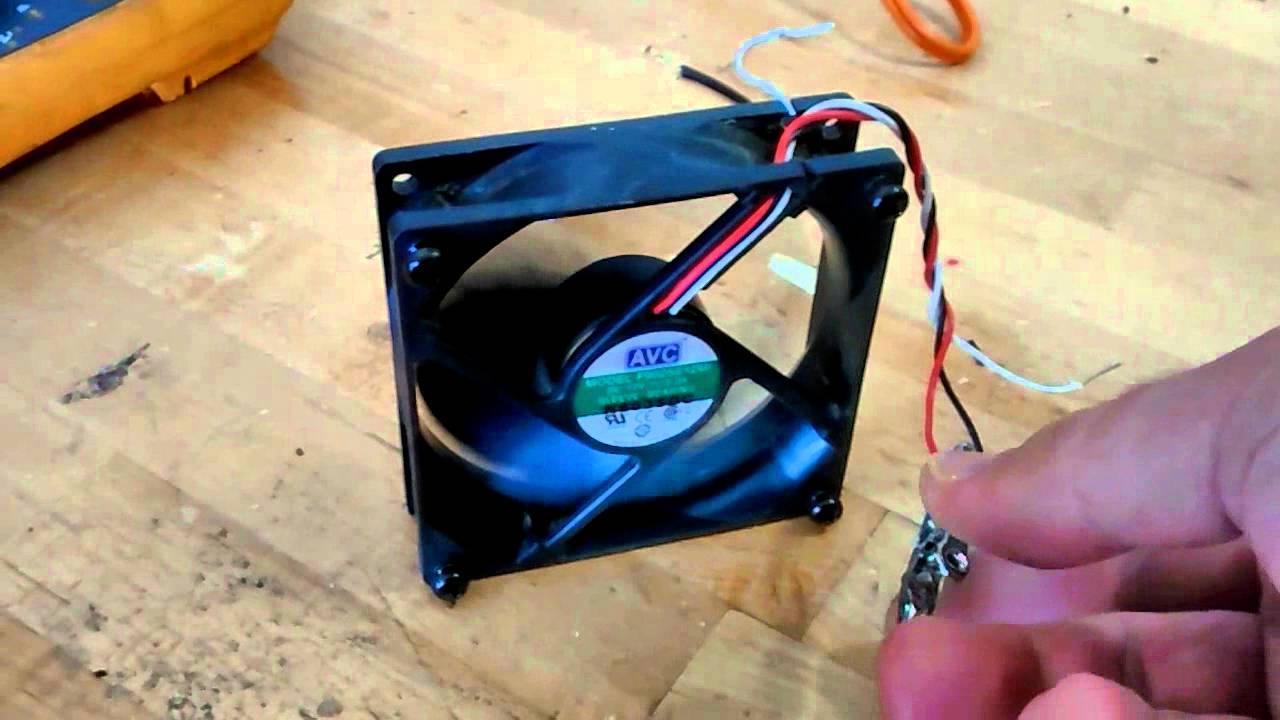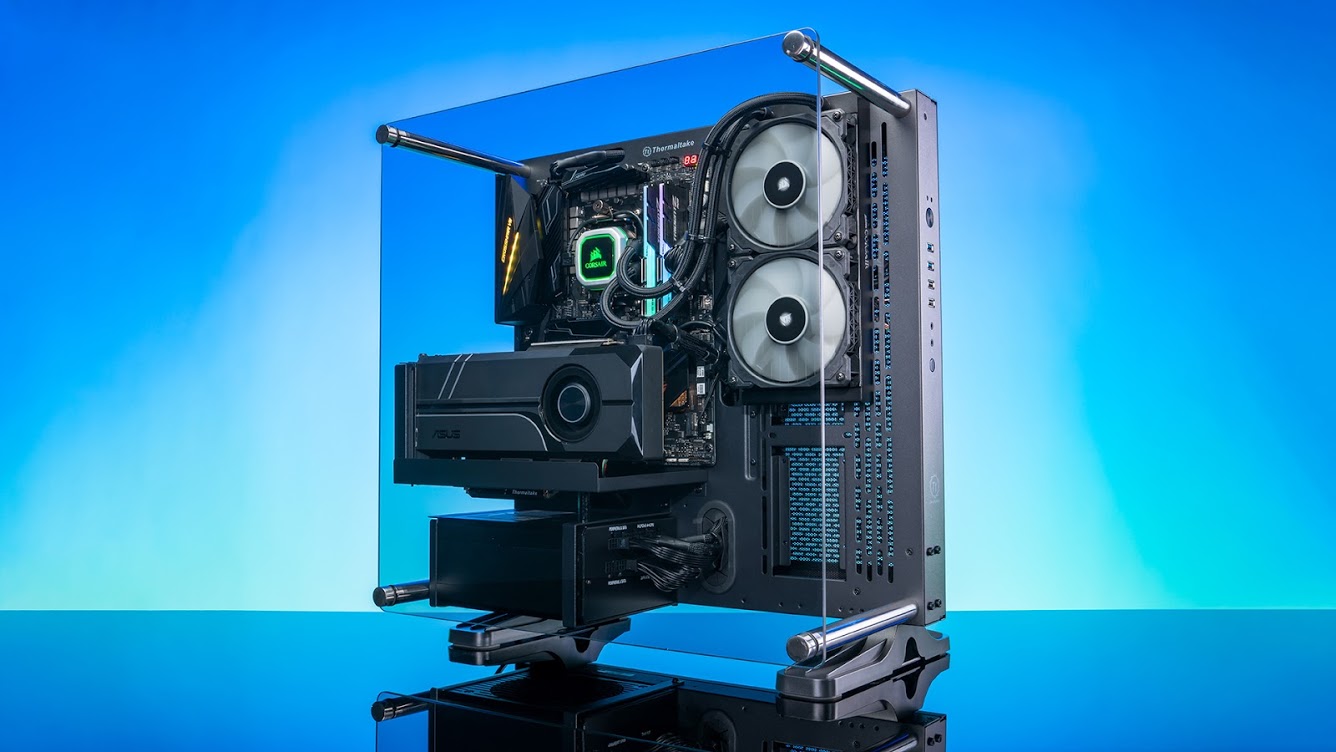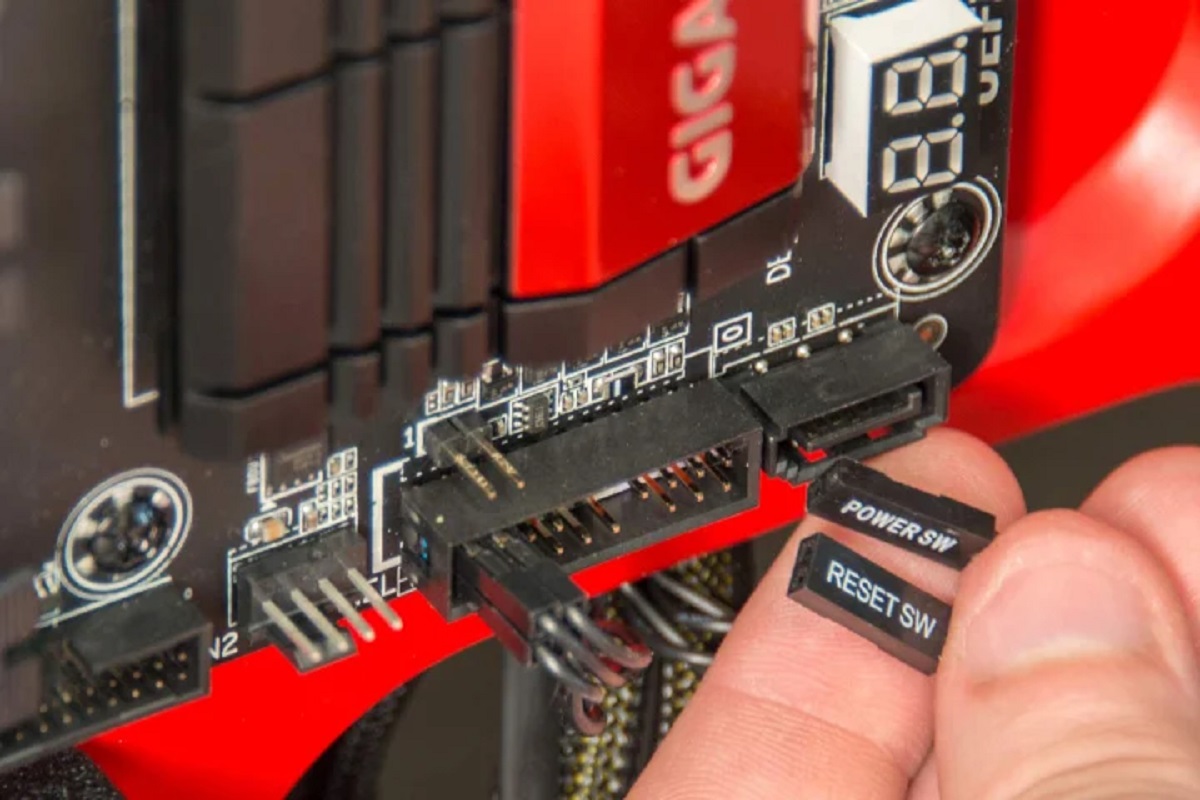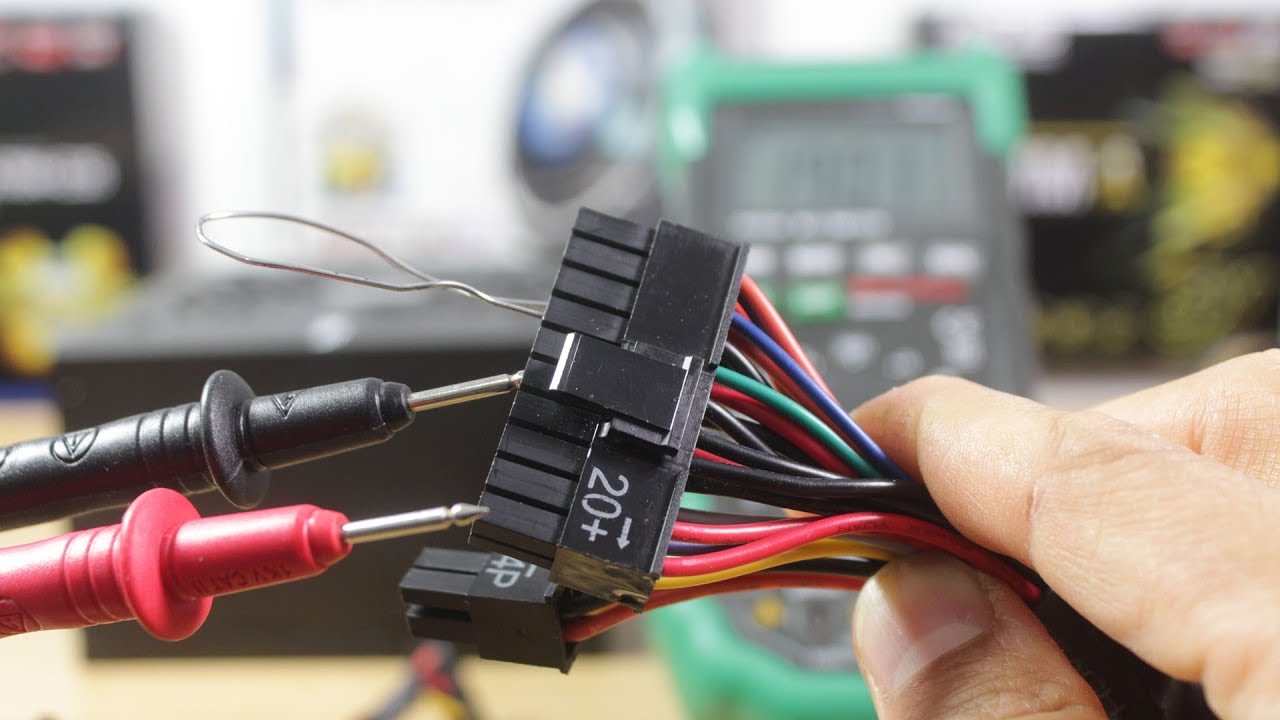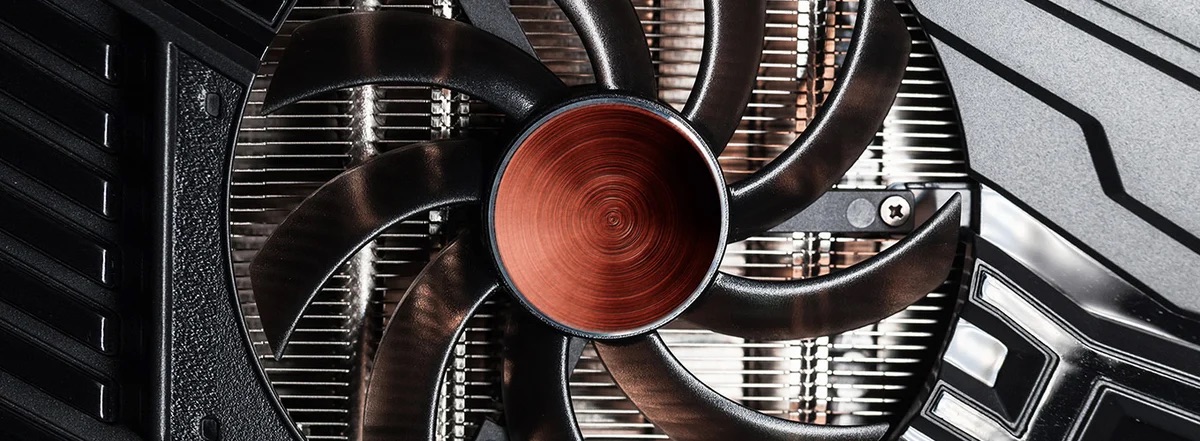Introduction
Welcome to the world of PC customization! Building and modifying your computer allows you to tailor it to your specific needs and preferences. One essential component of any PC is the case fan. These fans play a crucial role in maintaining the desired temperature and preventing overheating of your computer’s internal components.
However, there may be situations where you want to turn off a PC case fan. Whether it’s due to noise concerns, power consumption considerations, or simply personal preference, having the ability to control your case fans can be quite useful.
In this article, we will explore different methods that you can use to turn off a PC case fan. We will discuss both software and hardware-based approaches, each with its own advantages and considerations. So, strap in and get ready to learn how to effectively control the fans in your PC case!
Before we dive into the various methods, let’s take a quick look at the role of PC case fans and why you might want to turn them off in the first place.
Understanding PC Case Fans
PC case fans are an integral part of a computer’s cooling system. They are responsible for expelling hot air generated by the components inside the computer case and bringing in cool air to maintain optimal operating temperatures.
These fans usually come in various sizes, including 80mm, 120mm, and 140mm, and are typically mounted on the front, rear, or top panels of the computer case. They work in conjunction with other cooling components, such as heatsinks and liquid cooling systems, to ensure efficient heat dissipation.
Most PC case fans operate at a fixed speed, producing a continuous airflow to keep the internal components cool. However, it’s important to note that not all case fans are created equal. Some fans offer higher airflow rates and lower noise levels, making them more desirable for those seeking a balance between cooling performance and noise reduction.
When it comes to controlling PC case fans, there are several factors to consider. Firstly, the number of fans in your computer case will dictate the overall cooling capacity. Adding more fans can improve airflow and enhance cooling efficiency, but it can also increase noise levels.
Secondly, the positioning of the fans is crucial. Fans placed at the front of the case generally bring cool air into the system, while fans at the rear or top expel hot air. Proper placement and configuration of fans can optimize airflow direction and promote effective heat dissipation.
Lastly, it’s essential to consider the noise level generated by the case fans. While some people don’t mind the gentle hum of fans, others prefer a quieter computing experience. High-quality fans with noise-reducing features can strike a balance between cooling efficiency and noise output.
Now that we have a better understanding of PC case fans, let’s explore the reasons why you might want to turn them off.
Why Would You Want to Turn Off a PC Case Fan?
There can be several reasons why you might want to turn off a PC case fan. Let’s explore some of the common scenarios:
- Noise Reduction: PC case fans can generate noise, especially if they operate at high speeds. This noise can be bothersome, especially if you’re looking for a quiet computing environment. By turning off a case fan, you can significantly reduce the overall noise generated by your computer.
- Power Consumption: Case fans require power to operate. If you have multiple fans in your system, they can contribute to the overall power consumption. By turning off unnecessary case fans, you can reduce the power draw of your computer, which may be important if you’re trying to conserve energy or improve battery life on a laptop.
- Specific Cooling Requirements: In some cases, you may want to direct airflow in a specific way to cool certain components more effectively. By turning off certain case fans, you can redirect airflow to focus on specific areas of your computer, such as graphics cards or processors, ensuring they receive the necessary cooling.
- Customization and Aesthetics: PC case modding enthusiasts often consider case fans as a part of their creative endeavors. Some may prefer to turn off case fans for aesthetic purposes or to showcase other elements of their build, such as custom water cooling loops or RGB lighting effects. Turning off specific fans can help to create a visually appealing setup.
- Troubleshooting: Occasionally, a case fan may malfunction or become damaged. In such cases, it may be necessary to turn off the faulty fan temporarily until it can be repaired or replaced. This can help prevent further damage to the fan or unwanted vibrations that may negatively affect system performance.
Remember, while there can be benefits to turning off case fans, it’s important to do so with caution and consideration. Proper cooling is crucial for the longevity and performance of your computer components, so make sure to monitor temperatures and ensure that other fans are providing adequate cooling when you turn one off.
Now that we’ve explored the reasons for turning off a PC case fan, let’s move on to the different methods you can use to accomplish this.
How to Turn Off a PC Case Fan
There are several methods that you can utilize to turn off a PC case fan. The method you choose will depend on your specific setup and preferences. Let’s explore some of the most common methods:
- Method 1: Using the BIOS/UEFI settings: One of the simplest ways to control case fans is through your computer’s BIOS (or UEFI) settings. Restart your computer and enter the BIOS/UEFI by pressing the designated key during the startup process. Look for an option related to fan control or monitoring. From there, you can adjust the fan speed or even turn off specific fans entirely.
- Method 2: Using a Fan Speed Controller: If your computer case supports it, you can install a fan speed controller. These devices are typically mounted in a drive bay or connected to a USB header. Fan speed controllers allow you to manually adjust the speed of your case fans, making it possible to turn them off completely if desired.
- Method 3: Disconnecting the Fan’s Power Cable: For a temporary or quick solution, you can simply disconnect the power cable of the specific fan you want to turn off. This can be done by locating the fan’s power cable inside your computer case and gently unplugging it from the motherboard or fan controller. However, this method is not recommended for long-term use as it can lead to improper cooling.
- Method 4: Software-based Fan Control: Some computer systems come with software utilities that allow you to control fan speeds and profiles. These utilities, often provided by the motherboard manufacturer, give you the ability to customize fan settings, including turning them off. Check your computer’s documentation or the manufacturer’s website for compatible software.
It’s important to note that the availability and effectiveness of these methods may vary depending on your computer’s hardware and software configurations. Additionally, you should always exercise caution when making changes to fan settings, as improper cooling can lead to overheating and damage to your computer components.
Experiment with different methods and find the one that suits your needs and preferences best. Remember to monitor your temperatures and ensure that your computer is adequately cooled, even if you decide to turn off a case fan.
Note: Consult your computer’s documentation or seek help from a knowledgeable professional if you are unsure about any specific method or if you encounter any issues during the process.
Now that you’re familiar with the various methods to turn off a PC case fan, let’s discuss some potential risks and considerations.
Method 1: Using the BIOS/UEFI settings
One of the easiest and most common methods to control case fans is through the BIOS (Basic Input/Output System) or UEFI (Unified Extensible Firmware Interface) settings. Here’s how you can use this method:
- Start by restarting your computer. As soon as you see the startup screen, look for the key to enter the BIOS/UEFI settings. This key is usually displayed on the screen, and common keys include Del, F2, F10, or Esc. Press the appropriate key before the operating system starts loading.
- Once you’re in the BIOS/UEFI settings, navigate to the section related to fan control or monitoring. The exact location and terminology may vary depending on your motherboard manufacturer and BIOS/UEFI version.
- Within the fan control section, you’ll typically find options to adjust the fan speed. Look for an option that allows you to set the fan speed to a specific value (often represented as a percentage) or turn off the fan entirely.
- Use the appropriate options to control the fan you want to turn off. Keep in mind that some motherboards may have independent controls for different fans, while others may have a single setting that affects all case fans.
- Save the changes you’ve made in the BIOS/UEFI settings and exit. Your computer will restart, and the fan settings you’ve configured will take effect.
Using the BIOS/UEFI settings to control case fans provides a straightforward and reliable method. However, it’s essential to note that not all motherboards offer robust fan control options. Some older or budget motherboards may have limited control over fan speed or lack the option to turn off case fans entirely.
Additionally, changing fan settings in the BIOS/UEFI may require some trial and error to find the optimal configuration for your specific setup. Keep an eye on the temperatures of your components after making changes to ensure they remain within safe ranges.
Lastly, it’s worth mentioning that some premium motherboards come with dedicated software utilities that provide more advanced fan control features. These utilities allow you to fine-tune fan curves, create custom fan profiles, and even synchronize fan speeds with system temperatures. Check if your motherboard manufacturer offers such software, as it can provide additional control and flexibility over fan settings.
Now that you understand how to use the BIOS/UEFI settings to control case fans, let’s move on to the next method: using a fan speed controller.
Method 2: Using a Fan Speed Controller
If you’re looking for more precise control over your case fans, using a fan speed controller can be an effective solution. Fan speed controllers are hardware devices that allow you to manually adjust the speed of your case fans, including turning them off completely if desired. Here’s how you can use this method:
- First, check if your computer case supports a fan speed controller. Some cases have built-in controllers, while others require a separate controller that can be installed in a drive bay or connected to a USB header on your motherboard.
- If your case has a built-in controller, locate the control knob or buttons typically found on the front or top panel. These controls allow you to adjust the fan speed by simply rotating the knob or pressing the buttons.
- If you’re using an external fan speed controller, ensure that it’s connected to the appropriate power source and interface. Follow the manufacturer’s instructions for proper installation and connection.
- Once the fan speed controller is connected and installed, observe the different channels or zones assigned to each fan. Depending on the controller, you may be able to adjust individual fan speeds or set a common speed for all connected fans.
- Using the control interface on the fan speed controller, adjust the speed of the fan you wish to turn off by turning the knob or pressing the buttons accordingly. Decrease the speed until the fan stops spinning, effectively turning it off.
Using a fan speed controller gives you precise control over your case fans’ speed and allows you to turn them off selectively. This method is particularly useful if you want real-time control over fan speeds without accessing the BIOS/UEFI settings.
However, keep in mind that fan speed controllers are not universal, and their compatibility with your case and fans may vary. Ensure that the fan speed controller you choose is compatible with your case’s fan connectors and has the appropriate power capabilities for your fans.
Additionally, fan speed controllers may have limits on the number of fans they can control, so make sure to check the specifications and ensure that it suits your needs. Some controllers also offer additional features like RPM monitoring, temperature sensors, and even programmable profiles, providing more flexibility and customization options.
Now that you understand how to use a fan speed controller, let’s move on to the next method: disconnecting the fan’s power cable.
Method 3: Disconnecting the Fan’s Power Cable
If you need a quick and temporary solution for turning off a PC case fan, you can simply disconnect its power cable. Here’s how you can use this method:
- Power off your computer completely and unplug it from the power source. It’s essential to ensure that the computer is not receiving any power before proceeding.
- Open up your computer case by removing the side panel or panels. Take caution to ground yourself by touching a metal surface before touching any internal components to prevent electrostatic discharge.
- Find the power cable of the fan you want to turn off. The power cable is usually connected to the fan’s hub or directly to the motherboard or a fan controller. Follow the cable from the fan until you locate its connection point.
- Gently unplug the power cable from the motherboard or the fan controller. Be careful not to bend or damage the pins or connectors while doing so.
- Once the power cable is disconnected, carefully route it away from any other components to avoid interference or accidental reconnection.
- Close the computer case by reattaching the side panel or panels and reconnect the power cable to your computer. Power on your computer and observe that the fan you disconnected is not spinning.
Disconnecting a fan’s power cable is a straightforward method that can be easily reversed by reconnecting the cable when needed. However, it’s important to note that this method is not recommended for long-term use as it can disrupt the airflow within the computer case and lead to heat buildup.
Turning off a case fan by disconnecting the power cable is best suited for troubleshooting purposes or as a temporary solution until a replacement fan can be obtained. It can prevent further damage caused by a malfunctioning or noisy fan and allow you to continue using your computer until a permanent fix can be implemented.
Remember, when using this method, regularly monitor your system’s temperatures to ensure that other fans are providing adequate cooling and that your components are not overheating.
Now that you understand how to turn off a PC case fan by disconnecting its power cable, let’s explore another method: software-based fan control.
Method 4: Software-based Fan Control
Software-based fan control offers a more advanced and customizable way to control your PC case fans. It allows you to adjust fan speeds, create custom fan curves, and even synchronize fan speeds with temperature sensors. Here’s how you can utilize this method:
- Check if your computer system or motherboard manufacturer provides software utilities for fan control. These utilities are typically specific to the motherboard model and allow you to control various aspects of your system, including fan speeds.
- Visit the manufacturer’s website and download the appropriate software for your motherboard model. Install the software on your computer following the provided instructions.
- Launch the software and navigate to the fan control section or the area dedicated to fan management. The interface and options may differ based on the software and motherboard manufacturer.
- Explore the different fan control options available to you. You may be able to adjust fan speeds manually, choose from predefined fan profiles, or create custom fan curves based on temperature thresholds.
- Find the fan or fans you want to turn off and adjust their fan speeds to the lowest possible settings or set them to a static speed of 0%. This effectively turns off the selected fans.
- Save the changes you’ve made in the software utility and close the program. The new fan settings will take effect, and the selected fans should stop spinning or operate at a minimal speed.
Software-based fan control gives you more flexibility and fine-grained control over your case fans. It allows you to create custom profiles tailored to your specific cooling requirements, ensuring optimal performance and noise levels.
However, keep in mind that software-based fan control relies on the compatibility and functionality provided by the motherboard manufacturer. Some older or budget motherboards may have limited software support or lack advanced fan control options.
Additionally, when using software-based fan control, it’s important to keep the software running in the background for the changes to remain in effect. If you close the software or restart your computer, the fan settings may revert to their default configurations.
Remember to monitor your system temperatures when using software-based fan control, especially when turning off fans. Ensure that your components are adequately cooled by the remaining fans and that temperatures remain within safe operating limits.
Now that you understand how to use software-based fan control, let’s proceed to the next section, where we’ll discuss potential risks and considerations when turning off PC case fans.
Potential Risks and Considerations
While you have learned various methods to turn off PC case fans, it’s important to be aware of the potential risks and considerations involved. Here are some important points to keep in mind:
- Heat Buildup: PC case fans play a crucial role in maintaining the proper temperature of your computer’s components. Turning off case fans without considering the impact on airflow and cooling may result in heat buildup, potentially leading to overheating and reduced system performance.
- Component Longevity: Overheating due to inadequate cooling can contribute to the degradation of your computer’s components over time. It’s essential to strike a balance between noise reduction or power consumption concerns and ensuring proper cooling for the longevity of your hardware.
- System Stability: Turning off case fans may increase the possibility of thermal throttling, where your CPU or GPU reduces performance to mitigate heat-related issues. This can result in reduced system stability and potential performance bottlenecks, particularly during heavy usage.
- Monitoring Temperatures: When you turn off or reduce the speed of case fans, closely monitor your system’s temperatures using software or hardware monitoring tools. Regular monitoring ensures that your components are operating within safe temperature ranges.
- Proper Airflow: Consider the overall airflow configuration of your computer case. Ensure that removing or reducing the speed of a specific case fan does not disrupt the overall airflow path, hindering the cooling performance of other components.
- Compatibility: Some methods, such as software-based fan control, may require specific hardware support or compatible motherboard models. Check your hardware specifications and consult the manufacturer’s documentation to ensure compatibility before implementing any fan control method.
- Warranty Considerations: Modifying fan settings or physically disconnecting power cables may void the warranty of your hardware. Check the warranty terms and conditions provided by the manufacturer before making any changes to your PC’s cooling system.
Ultimately, the decision to turn off a PC case fan should be made based on a careful evaluation of your specific needs, hardware configuration, and cooling requirements. It’s essential to strike a balance between noise reduction, power consumption, and adequate cooling to ensure optimal system performance and longevity.
If you’re unsure about the impact of turning off a case fan or need guidance specific to your hardware setup, consult the manufacturer’s documentation, seek advice from professionals, or engage in discussions on reputable user forums.
Now that you’re aware of the potential risks and considerations involved, you can make informed decisions and safely control your PC case fans according to your preferences and requirements.
Conclusion
Controlling PC case fans provides you with flexibility and customization options to tailor your computer setup to your specific needs. Whether it’s for noise reduction, power savings, or directing airflow to specific components, being able to turn off a case fan can be advantageous.
In this article, we explored four methods for turning off a PC case fan: using the BIOS/UEFI settings, utilizing a fan speed controller, disconnecting the fan’s power cable, and using software-based fan control. Each method has its own advantages and considerations, so it’s important to choose the one that suits your hardware and preferences.
However, it’s crucial to be mindful of potential risks and considerations when turning off a case fan. Heat buildup, component longevity, system stability, and proper airflow are all factors that need to be taken into account. Regularly monitoring your system’s temperatures and ensuring adequate cooling for your components are key to maintaining optimal performance and preventing overheating.
Remember to consider compatibility with your hardware, warranty implications, and the impact on overall system airflow before making any changes to your PC’s cooling system.
By understanding the methods and considerations discussed in this article, you can confidently make informed decisions about turning off your PC case fans. Take advantage of the control and customization options available to you to create a computing environment that meets your needs and preferences while maintaining the optimal performance and longevity of your components.







